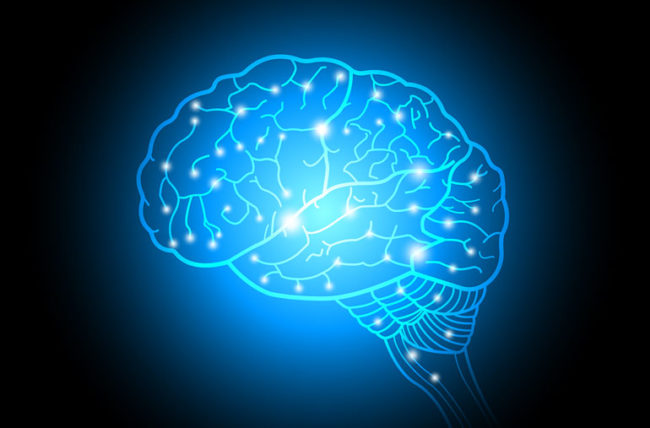Take this Brain Parts And Functions Quiz to test your knowledge. We update the quiz regularly and it’s the most accurate among the other quizzes.
The Forebrain
The hindbrain is made up of three parts: the medulla, the pons, and the cerebellum. The Medulla is located adjacent to the spinal cord and regulates functions that are not under conscious control, such as breathing and blood flow. In other words, the medulla regulates critical functions. Sleeping, waking, and dreaming are all affected by the Pons. The Cerebellum is in charge of balance and movement coordination. Damage to the cerebellum inhibits fine motor skills, therefore a person with cerebellar damage might struggle to play the guitar or type a term paper.
The Central Nervous System
The midbrain is a region of the brain located between the hindbrain and the forebrain. The midbrain assists us in locating events in space. It also has a neuronal system that releases the neurotransmitter dopamine. The Reticular Formation is involved in sleep and wakefulness, pain perception, respiration, and muscular responses. It passes through the hindbrain and the midbrain.
The Frontal Cortex
The Forebrain, which contains the thalamus, hypothalamus, limbic system, and cerebrum, is the largest and most complex region of the brain.
Thalamus
The Thalamus functions as a sensory relay station. Except for smell-related data, all sensory information must pass via the thalamus on its way to the cerebrum.
Brain Parts And Functions Quiz
Hypothalamus
The hypothalamus is located beneath the thalamus and regulates the pituitary gland and the autonomic nervous system. The hypothalamus is responsible for regulating body temperature as well as biological impulses such as hunger, thirst, libido, and aggression. Also, you must try to play this Brain Parts And Functions Quiz.
The Nervous System is a complex, highly coordinated network of tissues that communicate with one another via electrochemical impulses. It receives and processes information in the body and is separated into two major branches: the central nervous system and the peripheral nervous system.
The Central Nervous System (CNS)
The Central Nervous System receives and interprets sensory information. The central nervous system is made up of the brain and the spinal cord. Both organs are surrounded by a fluid known as Cerebrospinal Fluid, which cushions and nourishes the brain. The Blood-Brain Barrier protects the cerebrospinal fluid by preventing numerous medications and poisons from entering the body. This barrier is a membrane that allows some compounds from the blood to enter the brain while keeping others out.
The Spinal Cord is the nerve that connects the brain to the rest of the body. It runs from the brain to the small of the back and is in charge of Spinal Reflexes, which are automatic responses that do not require brain input. The spinal cord also conveys messages from the brain to the rest of the body and from the rest of the body to the brain.
The brain is the central nervous system organ. It integrates sensory information and coordinates the body’s functions. It enables people to recall their childhoods, plan their futures, write term papers and works of art, communicate with pals, and experience strange dreams. Distinct areas of the brain perform different functions.
Spinal Cord Impairment
The spinal cord connects the brain and the body and is protected by the spinal column’s bones. Spinal cord injuries can result in catastrophic complications, such as paralysis. Even slight spinal cord damage can result in loss of feeling in many parts of the body, reduced organ function, and loss of muscular control. Though spinal cord injuries are usually permanent, current research into regenerated axons and stem cells give optimism that these injuries may one day be successfully cured.
About the quiz
The Nervous System of the Periphery
The Peripheral Nervous System includes all elements of the nervous system excluding the brain and spinal cord. There are two sections to the peripheral nervous system: the somatic nervous system and the autonomic nervous system.
Somatic Nervous System
The Somatic Nervous System is made up of nerves that link the central nervous system to voluntary skeletal muscles and sensory organs. Voluntary skeletal muscles are those that assist us in moving about. The somatic nervous system contains two types of nerves:
Afferent nerves transmit information from muscles and sense organs to the central nervous system.
Efferent nerves provide information from the central nervous system to muscles and sense organs.
The Autonomic Nervous System (ANS)
The Autonomic Nervous System is made up of nerves that connect the brain to the heart, blood arteries, glands, and smooth muscles. Smooth Muscles are involuntary muscles that assist organs like the stomach and bladder in performing their jobs. The autonomic nervous system regulates all of the body’s automatic functions, such as breathing, digestion, perspiration, and heartbeat. The sympathetic and parasympathetic nerve systems comprise the autonomic nervous system.
The Sympathetic Nervous System prepares the body for action in the event of an emergency. It participates in the fight-or-flight response, which is the body’s immediate reaction to stressful or threatening conditions. The sympathetic nervous system prepares the body for a stressful situation. It slows digestion, draws blood away from the skin to the skeletal muscles, and activates hormone release, allowing the body to act swiftly.
During states of relaxation, the parasympathetic nervous system becomes active. It aids the body’s ability to save and store energy. It slows the heartbeat, lowers blood pressure, and aids digestion.
For more trivia quizzes check this: Ferret Quiz




